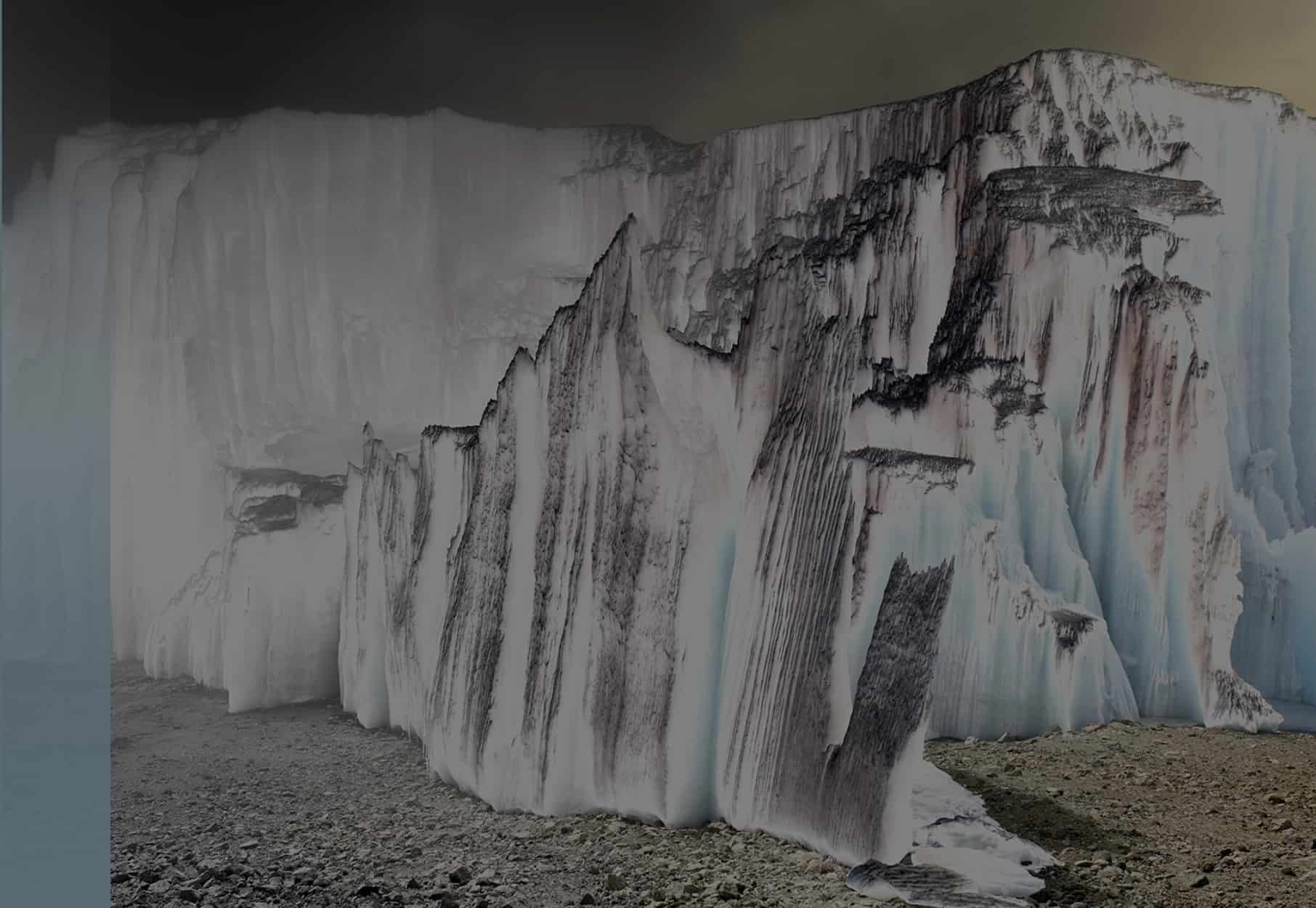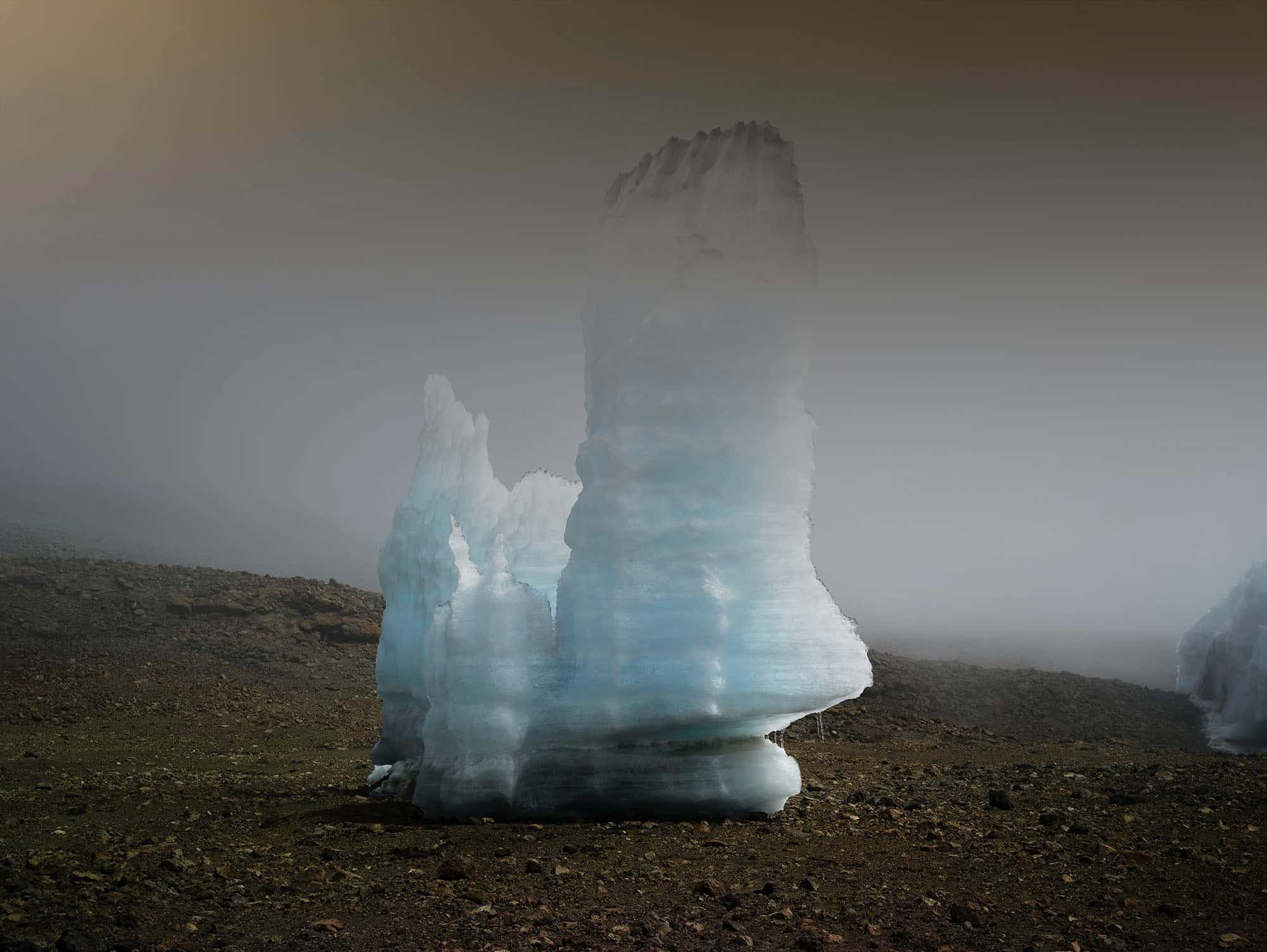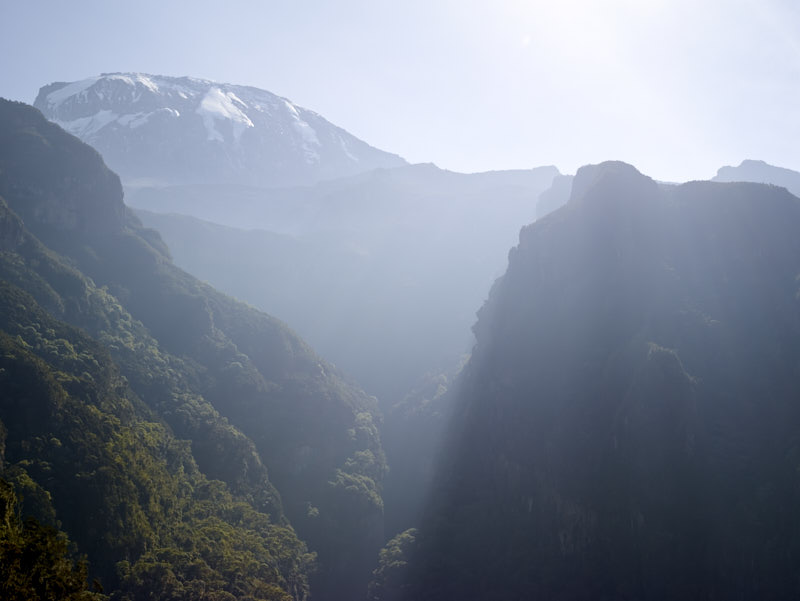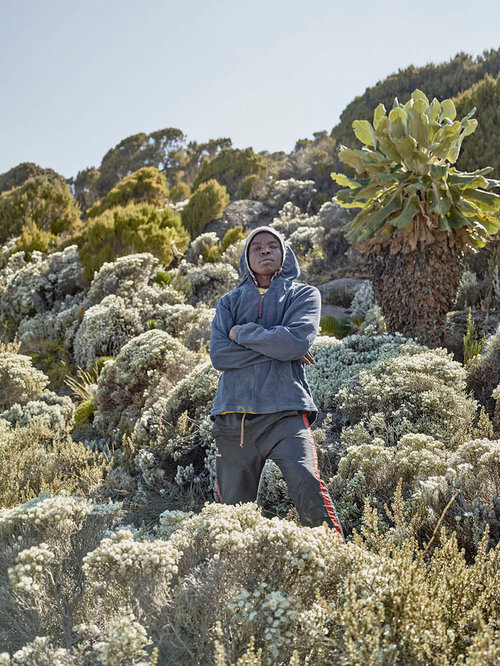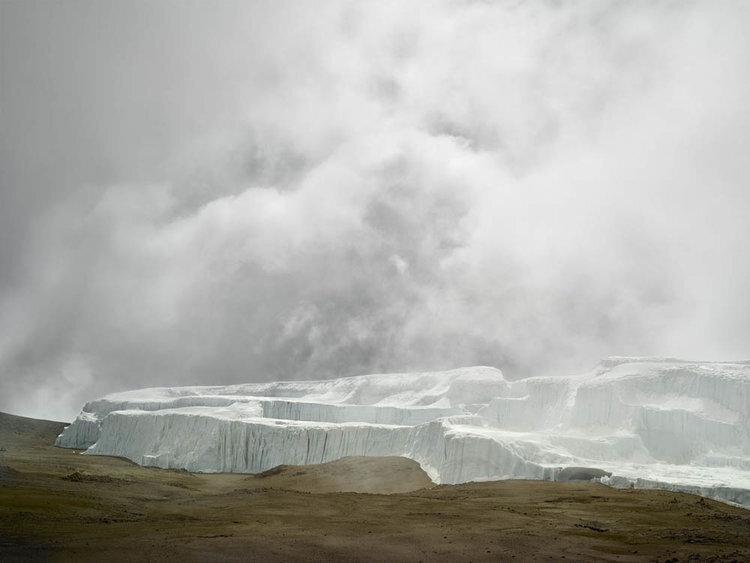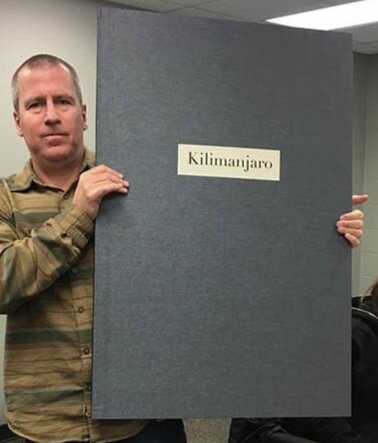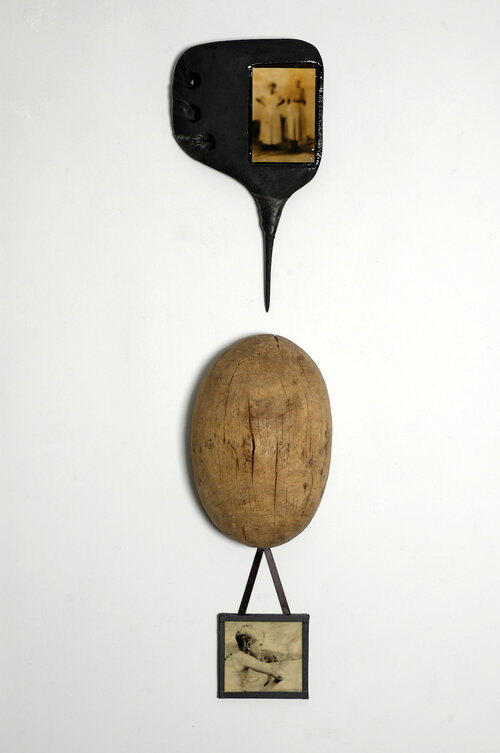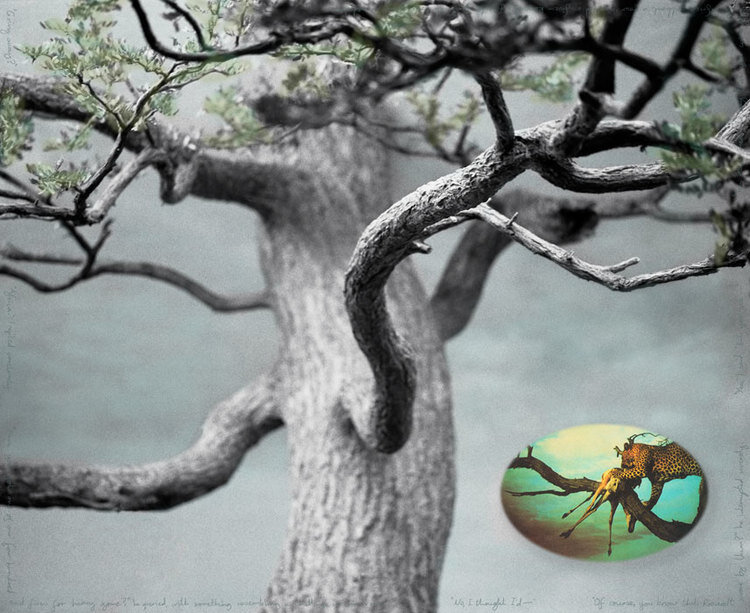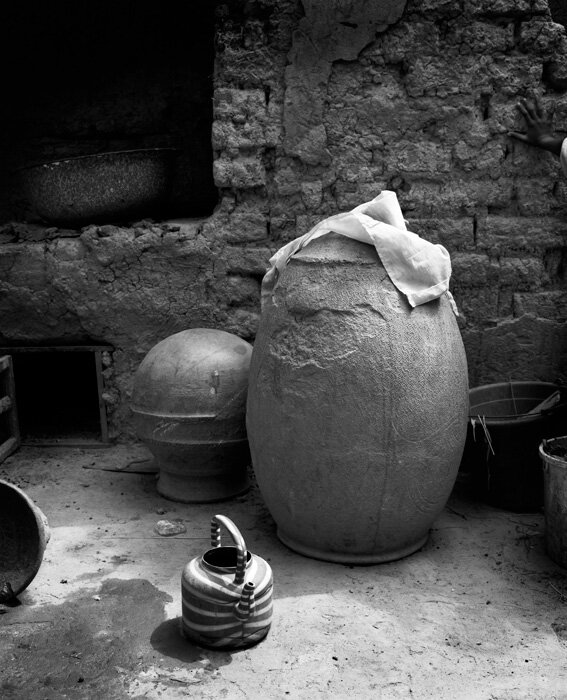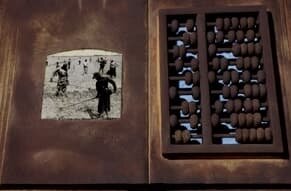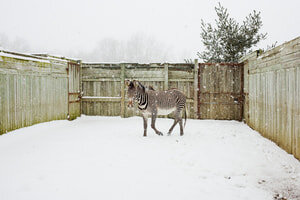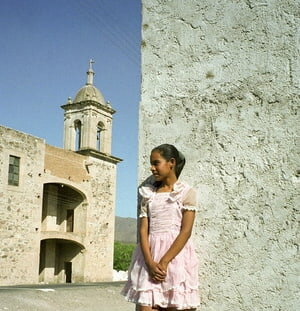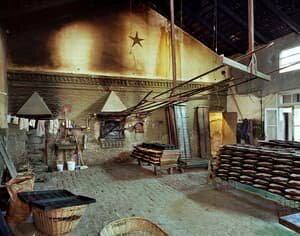About Ian van Coller
Ian van Coller is a South African born, Bozeman, MT-based artist most celebrated for his artist’s books, hybridized images, and collaborative works with climate change scientists. Overarching themes running through the Artist’s oeuvre include the ethics of planetary stewardship and humanitarianism. These subjects are charged with emotion and rationality, often have a naturalist sensibility, and engage a duality of expression.
Ian Van Coller earned a 2018 Guggenheim Fellowship to pursue Naturalists of the Long Now, a study on deep time. This title is emblem for an idea that bridges the history of modern rational thought from its roots to its aspirational initiatives. It anchors to Victorian era conceptions and teathers to an initiative to build a 10,000 year clock. Works belonging to this umbrella-topic of deep time fall under the oeuvre Naturalists of the Long Now, the project has overarching and chapter-based aspects. As a whole, Naturalists of the Long Now encompases unique works, editioned prints, and artist’s books. The artist has focused primarily on glaciers in the Arctic and Antarctic, the Americas, and Africa, but he is also interested in documenting long-living species such as the Bristlecone Pine.
Naturalists of the Long Now
Untitled (Digital Landscapes)
Kilimanjaro: The Last Glacier by Ian van Coller
Kilimanjaro: The Last Glacier is a book and a series of limited editioned prints. In this photographic project, the artist accompanies climate change researchers on an expedition to their study-site. Van Coller documents the journey; the artist makes paring and sequencing choices that harmonize landscape and the porters figures. This pushes their connection so as to personify place; the ice, the rocks, and the vegetation start to look like the men who facilitate the climb to the ice fields perched upon the dormant volcano. The glaciers start to come alive, until we consider that we are watching their final days, and witnessing a double death. Without the tourism driven by the unique landscape many of these men will be left without livelihood.
This set of works from Ian van Coller’s Naturalists of the Long Now are distinct; they belong to a small set that have been evolving slowly over the past few years and use an alternative approach. Still in production, they use technology-reliant interventions like inversion, color sampling, or visual braking. Mesmerizing and illusive, these digitized landscapes are etherial depictions of subjects Earth created to endure for eons, now replaced by man and machine who mount a futile effort just to document them for a future that may not last as long.
Artist's Books by Ian van Coller
Ian van Coller’s artist’s books are among his most celebrated and collected pieces. The artist’s book is a preferred form through which van Coller conveys his artistic vision. His photography feels most potent presented in an entirety as a book-object where sequence, scale, and materials heighten sensibilities he seeks to transcribe. Book plates are all available as loose, limited edition prints.
Preview books on Ian van Coller's website.
Gallery can sell available editions of artist’s books; inquiries welcome.
Ian van Coller - Early Work
As a white South African who grew up during apartheid, Ian van Coller was compelled to address this childhood experience as well as the guilt associated with this and a greater colonial legacy. This line of study is investigated in several bodies of work: Colonized Trees (sample left) and several bodies of work that followed including Memory Boards, Natural History, and Mali Monuments (see selections below). These projects underscore the difference between the colonial and the "true African" perspectives and address duality of place, vantage, and history.
Memory Boards by Ian van Coller
Executed between 2000 - 2007 Ian van Coller’s Memory boards were created by the artist “as a way to trace personal memory/history, as well as the social memory/ history of South Africa.” The materials for these pieces are varies. Frames are all made by hand and densely layered with ink, oil paint, shellac and pig-ments. Many of the images are modern ambrotypes (silver emulsion on black glass).
Through these works the artist deals with the colonial legacies that have become the social and economic realities of a modern South Africa “in an attempt to resolve the dramatically different influences on my life growing up in South Africa, and to come to terms with my place in the world.” Van Coller makes specific choices about the images, materials, and the frames. This body of work originated with the idea of Zambian object that carries the same name and purpose, to document and transcribe memory-events for future generations.
Natural History by Ian van Coller
In Natural History Ian van Coller integrates photographs he made of African dioramas at the Natural History Museum and historical photos with his own handwriting to contemplate the nature and layered if not duplicitous history of Africa. Beautiful and loaded these images are surprising; subtle shifts such as a line of text in conjunction with an image of an elephant referencing the best hunting rifle, used even by Theodore Rosevelt, pushes our comfort level out of bounds.
The sensibilities in these early works reveal formal and conceptual approaches important to van Coller’s hybridized style, including the use of collage and handwriting. It foreshadows a connection to what has become a growing interest in Naturalism.
Mali Monuments by Ian van Coller
Trough these black and white photographs the artist sought “to create [his] own unique portraits of ‘African Monuments’ that are separate from the imposed and constructed European monuments that [he] grew up learning about in school.”
Ian van Coller teaches at Montana State University. His work is in such notable public collections as the Birmingham Museum of Art; Durban Art Gallery, South Africa; Getty, Los Angeles; Johannesburg Art Gallery; Nelson-Atkins Museum of Art, Kansas City; New York Public Library; Philadelphia Museum of Art; Scottsdale Museum of Contemporary Art; South African National Gallery, Cape Town; Tokyo Metropolitan Museum of Photography Library, Tokyo; among others.














